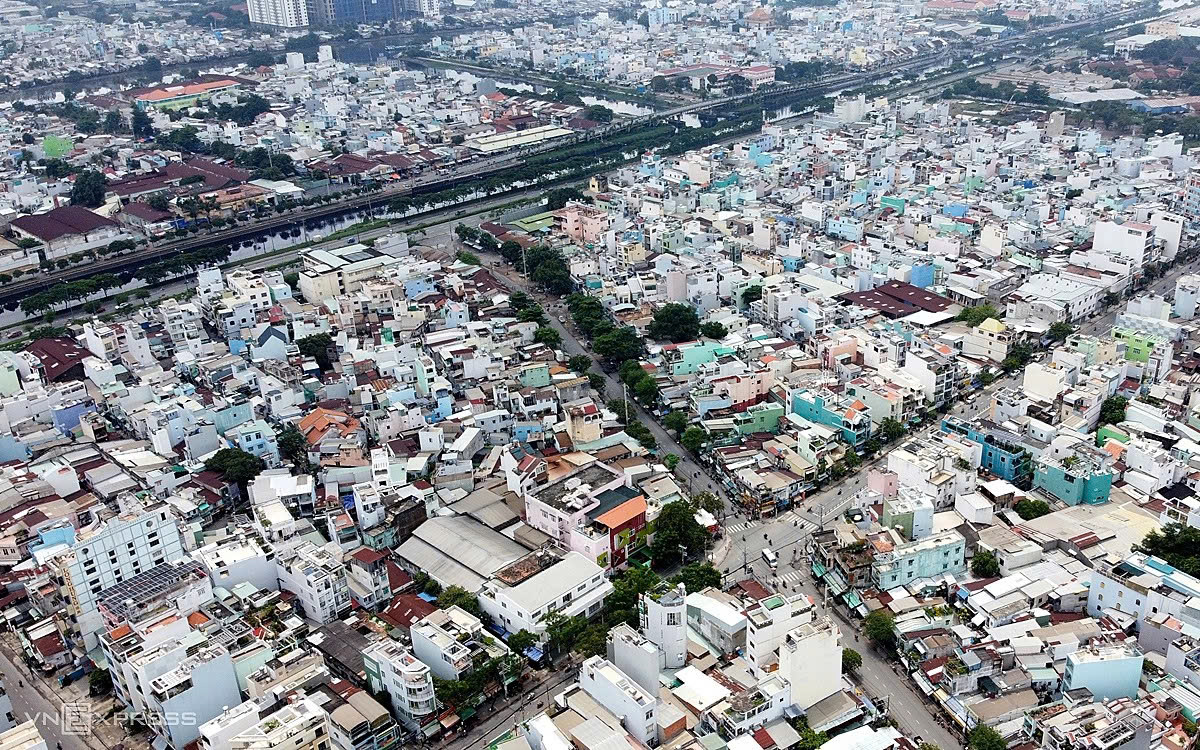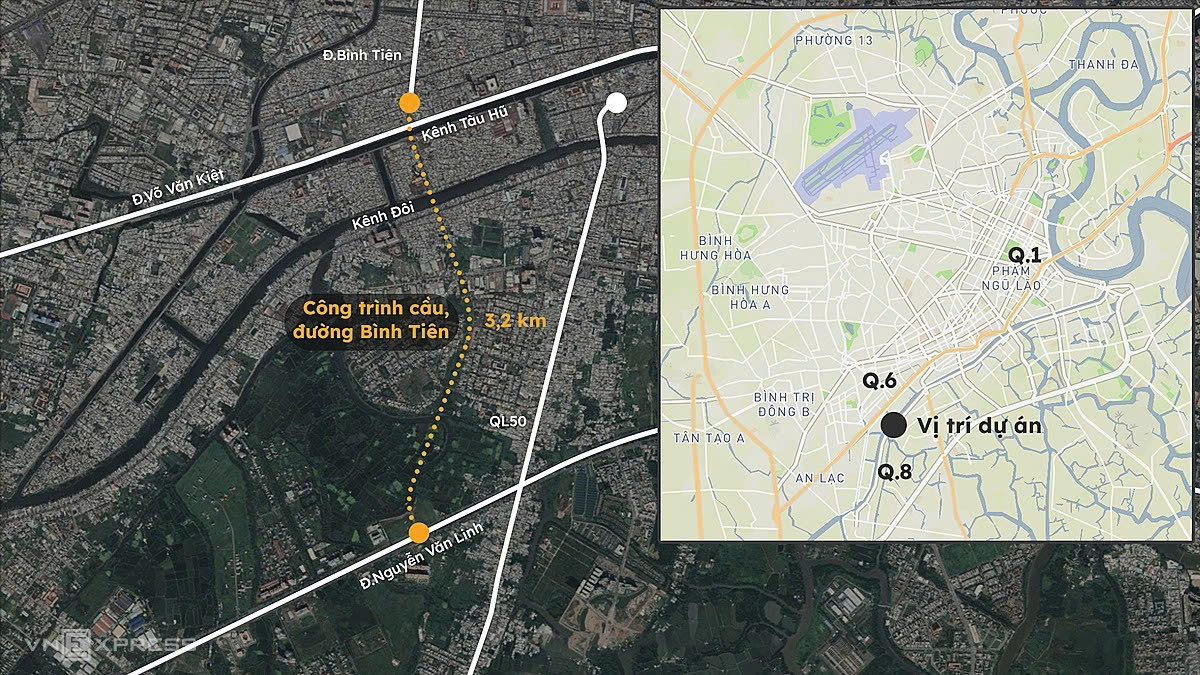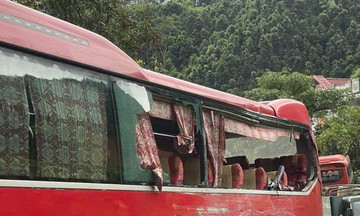According to the Ho Chi Minh City People's Committee (UBND TP HCM) decision, the competition will be open for approximately 75 days. Consulting firms, organizations, or consortiums specializing in architecture, planning, and bridge and road transportation are welcome to participate, with no limit on the number of entries. Upon completion, the jury will evaluate, rank the submissions, select the optimal design, and submit it to the city for approval and award.
 |
Binh Tien - Pham Van Chi intersection, District 6 - the starting point of the Binh Tien bridge and road project. Photo: Giang Anh |
Binh Tien - Pham Van Chi intersection, District 6 - the starting point of the Binh Tien bridge and road project. Photo: Giang Anh
The architectural design competition for the Binh Tien bridge and road aims to find an optimal, unique, and highly feasible design. The city also requires a modern design that creates a landmark for the urban landscape in the southern part of the city.
The Binh Tien bridge and road project has a total length of about 3.6 km. It begins at the Binh Tien - Pham Van Chi intersection in Binh Tien ward (formerly District 6), crosses Vo Van Kiet street, Tau Hu and Doi canals, and connects to Nguyen Van Linh boulevard in Binh Hung commune (formerly Binh Chanh district). The route will be constructed with a width of 30-40 m and 4-6 lanes.
The total project cost is nearly 6.3 trillion VND. This includes nearly 2.9 trillion VND for site clearance and compensation, and over 2.264 trillion VND for construction and equipment. The remaining funds are allocated for consulting, project management, and contingencies.
 |
Route of the Binh Tien bridge and road project. Graphics: Khanh Hoang |
Route of the Binh Tien bridge and road project. Graphics: Khanh Hoang
The Binh Tien bridge and road project was initially planned by Ho Chi Minh City over 10 years ago under a build-transfer (BT) contract. Due to difficulties in site clearance and investment procedures, the project was halted under this model.
In April of this year, the Ho Chi Minh City People's Council approved the investment plan for the project, to be implemented from now until 2028. Upon completion, the project will contribute to the development of transport infrastructure in the southern part of the city, connecting with major routes: National Highway 50, Nguyen Van Linh street, National Highway 1, Ben Luc - Long Thanh expressway, and Ring Road 3.
Giang Anh












